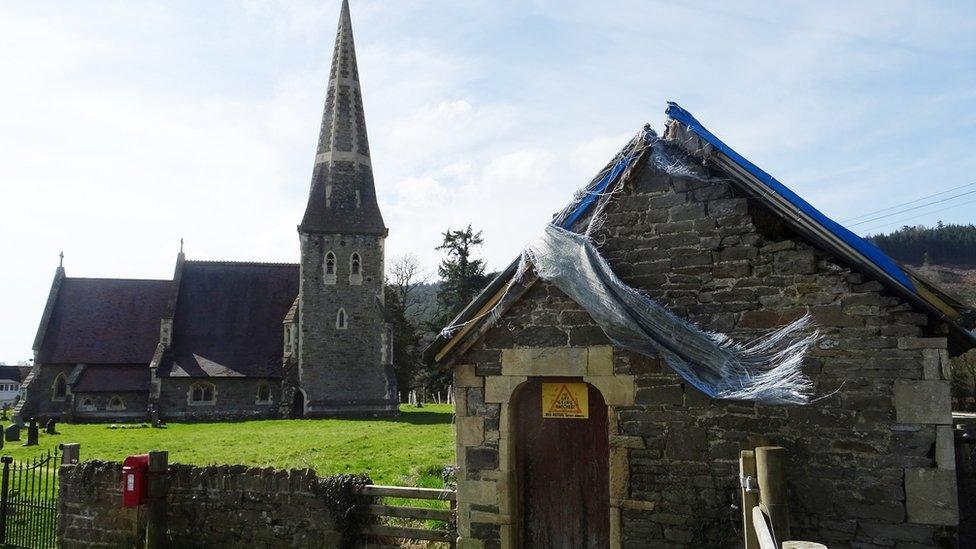Victorian 'dead house' in Powys is saved from ruin by grant
- Published

A "dead house" where bodies were kept in Victorian times before burial is to be saved from ruin by a £50,000 Heritage Lottery Fund grant.
It is part of the Grade II-listed St Cynog's church in Boughrood, Powys, that was rebuilt in the 19th Century.
Experts placed it on the register of buildings at risk and gave it less than 12 months to survive if emergency works were not carried out.
It is believed to have been Wales' only parish mortuary.
The then-vicar, Henry de Winton, had commissioned a separate building to be constructed alongside the church to house corpses prior to burial.
He made the decision because it was believed the London cholera epidemic of 1848 was caused by decaying bodies spreading disease.
This was seen as visionary thinking in Victorian Britain, at a time when it was still common to keep the dead in the family home until sufficient decomposition had taken place to discourage grave robbing of bodies for medical dissection.

The lottery cash will help restore leaded glass windows, protect masonry containing 19th Century graffiti and replace the earth floor with one made from re-used headstones.
It will also enable volunteers to research the dead house's significance and create an exhibition that will be open to the public.
Current St Cynog's vicar Ian Charlesworth said it will help "engage the community in its rich history".
Other benefits from the cash will be the production of a short bilingual film about life expectancy, the Poor Law and medicine in the Victorian period.
Head of the Heritage Lottery Fund in Wales, Richard Bellamy, called it an "unusual and truly unique building with a fascinating social history".
"Its significance to the local area and indeed the whole of Wales - as the country's only dead house - is well worth protecting," he added.
- Published29 March 2018

- Published9 April 2018
